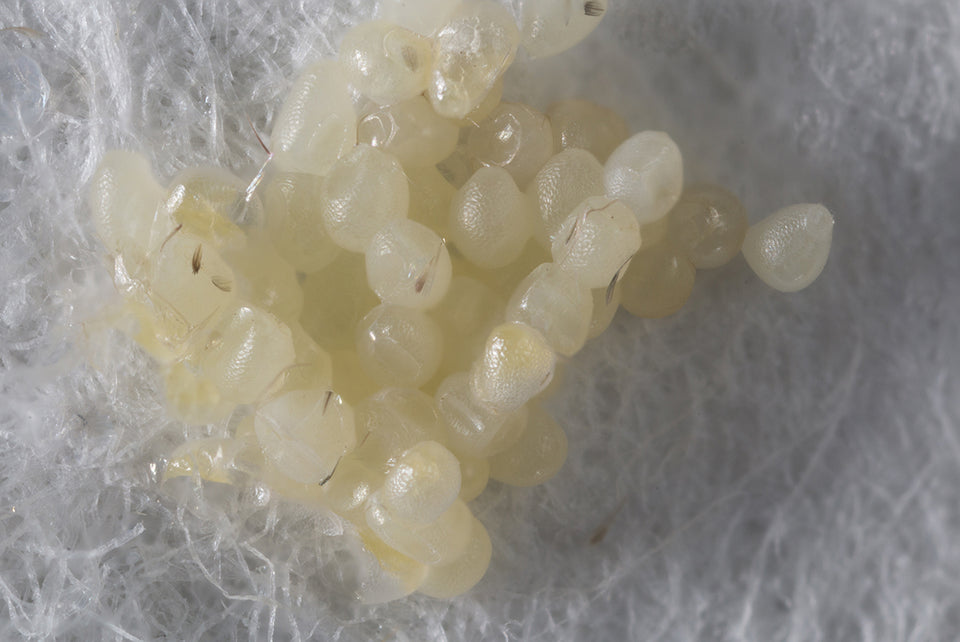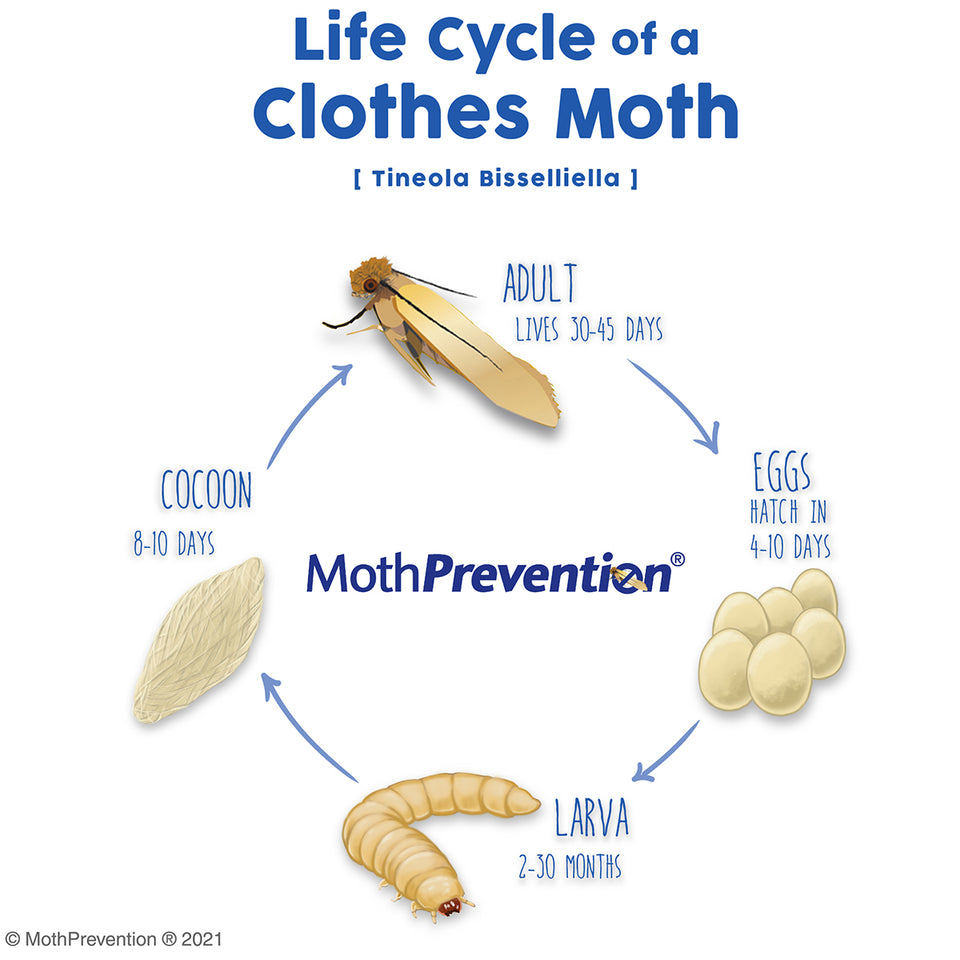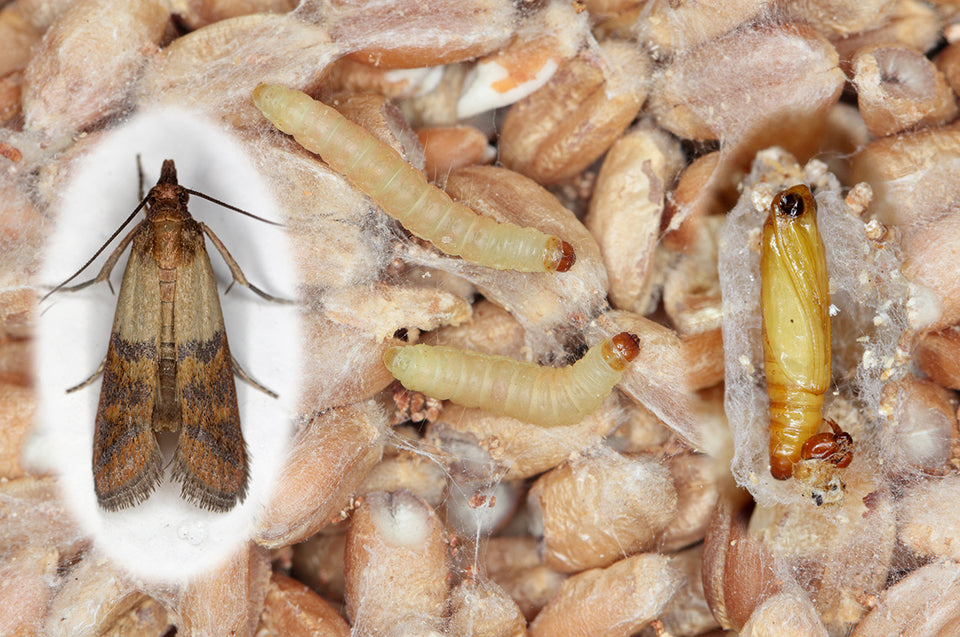Moth Hatching Season: When Are Moths Active

Moth hatching season is no laughing matter, especially if you want to prevent moth damage in your home. Picture this: it’s early July and you come home from a brief holiday weekend. The hour is late, and as you head to your bedroom and flip the lights on, you’re shocked to find insects flying every which way. Suddenly, you realise your bedroom is quite literally crawling (and fluttering) with dozens of moths. While you were out, it seems that the moths moved in!
Unfortunately, this very scenario is more common than many people realise until it happens to them personally. Nothing is worse than an invasion of moths! So precisely when do moths hatch each year and how can you prevent them from infesting your home?
The short answer:
Moth eggs take anywhere from 5 days to 22 days to hatch. Many factors can impact moth egg incubation. Removing moth eggs and larvae before they hatch can help you stop a moth infestation in its tracks. To spot nearly microscopic moth eggs is a pretty big challenge but look for a sticky, web-like material in the cracks or dark crevices of any item or area you suspect might be infested.
To be sure, there’s a lot more to the topic of moth season, moth egg incubation, and moth prevention than just knowing when moths hatch or are most active. In this guide, we’ll walk you through everything you need to know about what times of the year moths are most active, when they hatch, how long they take to hatch, and more!

How Can You Prepare Your Clothes for Moth Season
Although moths can be a problem at essentially any time of the year, the spring and summer months are definitely more active times for these pesky insects. This is due to factors like warmer weather. As such, preparing your home before the onslaught of moth season can help you prevent all sorts of problems!
Top Ways to Prevent Moths This Spring and Summer
No one wants moths wreaking havoc throughout their home. Here are a few ways to keep the moths at bay as the weather warms up and the flowers bloom!
Spring clean early
Airing out your attic, garage, or other rarely visited areas is a must. Sweep, mop, and most importantly, vacuum! Then, empty your vacuum far away from your home, as you may have sucked up moth eggs, moth larvae, or moth cocoons. Wiping down your cabinets, drawers, and cupboards with a solution of 1 part white vinegar to 3 parts water can also be very helpful. White vinegar is safe for use around kids and pets. For a longer term solution we recommend our Clothes Moth Killer Kit or Carpet Moth Killer Kit.
Keep your clothes made from animal based fibres safe and moth-proof your house
Keep fabrics like wool, silk, fur, cashmere, and leather safely tucked away in airtight bins or containers. Vacuum-sealed bags are also very handy for keeping moth-prone fabrics safe. Moth proof clothes storage solutions such as moth proof garment bags are also essential for long-term Moth Prevention. Also, make sure to seal gaps in windows or doors. If you live in an area where migratory moths are a problem, be sure to shut off outside lights (like porch lights) off at night so as not to attract migrating groups of Miller Moths.
Use Natural Clothes Moth Traps
Setup Clothes Moth Traps that can catch the active adult male moths and will help break the breeding cycle.
Avoid hanging "herbal sachets" in combination with Pheromone Clothes Moth Traps. Other popular advice you'll hear may say "hang herbal sachets filled with thyme, rosemary, lavender, chrysanthemum, cedar, mint, and other fragrant herbs are a great natural way to make your house less appealing to these insects."
The reason you'll hear this advice elsewhere is because many moth species are repelled by these natural herbs and plants. But this isn't the most effective way of preventing a moth infestation. Herbal sachets often lose their scents soon after being placed amongst your clothing, rendering them useless without constant refreshing of the sachet contents.
Hanging herbal sachets in combination with pheromone moth traps will also mean these deterrents and attractants are at odds with each other. Placing natural deterrents in between stored clothing, can work whilst also hanging pheromone clothes moth traps - if the two aren't in close proximity.

When is Moth Season and How Long Does it Take for a Moth to Hatch
Some moths hatch seasonally while other moths, like the Clothes Moth, are active all year round. Generally, moths hatch and become most active in the late spring and early summer. However, some moths, like the Miller Moth, migrate. These moths are often active throughout the entire summer and can plague different areas in the United States from May to late August.
Additionally, you will have to take into consideration where you live, how the weather has been throughout the year, and whether your home is attractive to moths in general. You will also want to determine what kind of moth you are trying to prevent. The life cycle of Clothes Moths, for instance, can be dependent on the temperature outside, humidity, and how abundant food sources (ergo, your clothes) are. Factors like how long the most recent winter lasted and whether you have indoor heating must also be taken into consideration.
As you can see, there’s no simple answer to this question of when moths hatch. Moth larvae will emerge from their eggs and begin eating their preferred food source when the time is most opportune for them. However, you are probably trying to determine how long it takes for a moth to hatch so that you can prevent these pesky insects from damaging your home, your clothes, and your pantry goods. With this in mind, let's go over the life cycle of common pestilent moths and how everything works so that you will have a better idea of how to prevent them.
The Lifecycle of Pest Moths

Two of the most common pestilent moths are Pantry Moths and Clothes Moths. Both of these annoying insects are particularly problematic in the moth larval phase when they eat through your belongings and grow. The cycle tends to go something like this:
- A female Clothes or Pantry Moth will enter a home in search of an abundant food source. For a Clothes Moth, this may be a quiet closet, a wardrobe with silks and furs, or a storage bin with an open lid. For a Pantry Moth, a pantry, cupboard, or any unsealed bulk food item such as a large exposed bag of flour (or even dog food) will do.
- The female moth lays her eggs near the food source. Many pest moths have egg casings that are sticky, with a sort of webbing that coats the eggs so that they adhere to a crack or crevice. This can make them hard to spot! Even worse, moth eggs are very tiny and almost invisible to the naked eye. This is one reason that they can be accidentally carried into your home on used furniture or in bulk packaging.
- The eggs incubate for the allotted period. In most cases, it takes about two weeks for moth eggs to hatch. However, if moth eggs were laid, say, 12 days before you took home a bulk bag of dog food from the store, they could hatch as soon as the next day! It can be hard to know how long eggs have been incubating before you initially spot them —this is why many homeowners use moth pheromone traps and moth prevention products.
- The larvae of moths emerge from the eggs and begin eating and growing. In many cases, these larvae start out at less than ⅕ of an inch long and grow as large as ½ an inch long, depending on a few factors like the type of moth, nutrition quality, etc. This larval stage is when moths are generally the most destructive. As they grow, many moth larvae will shed their skins, a telltale, and let’s be honest also a disgusting sign, of an infestation.
- Moth larvae pupate and spin cocoons. Moths can remain in a cocoon for a few days or up to four weeks. However, most small Clothes and Pantry Moths only stay in the cocoon phase for a couple of weeks.
- Finally, adult moths emerge from their cocoons and look for a mate. Then, the whole cycle repeats itself. This is the part of the cycle where people will notice an abundance of moths fluttering around their closet or pantry. Keep in mind that multiple generations of moths could repeat this cycle in a rarely visited attic —using moth prevention moth traps is one way to combat this ongoing cycle.

Summary: How long does it take for moth eggs to hatch?
Moth eggs usually take one and a half to two weeks to hatch. Then, they can spend many months as hungry and destructive larvae. After the larvae phase and growth are complete, moths spin cocoons and grow into adults. Adult moths then mate, lay eggs, and the cycle repeats.
Migratory Moths, Dealing with Moth Season and Preventing an Infestation
Some moths migrate annually, meaning an explosion of moths can take place seemingly out of nowhere. Depending on where you live, migrating moths may come and pay you a visit anywhere from May to late August. Other species of pestilent moths are active year-round and will continue breeding and laying eggs anywhere that abundant food sources can be found.
Preventing migrating moths like Millers is a fairly easy process. These moths often visit residents of Texas, Colorado, Nebraska, Wyoming, North Dakota, South Dakota, Montana, and other midwestern or plains states. Prevention of these moths involves sealing gaps in your doors, shutting screens on windows, and closing off any other areas where moths can sneak inside your home.
You should also be sure not to leave your porch lights on at night, as most migrating moth species love to hang out near artificial light sources. Close your blinds, turn off the porch lights at night, and try to keep your doors shut if you notice a migration headed your way in the summer. Summer Miller migrations usually kick off with you noticing just a few seemingly innocent moths in your home. Then, as if by magic, there are hundreds of moths in your living room, garage, etc. While Millers aren’t dangerous or damaging, they are still not welcome houseguests, especially if they arrive in the hundreds!
Preventing Clothes Moths and Pantry Moths involves making sure that you do not accidentally carry moth-egg-infested items into your house. Cleaning your home regularly is also key. Be sure to always sweep and vacuum regularly and store fabrics at risk from moths and food items in airtight containers whenever possible.

FAQS On Moth Season
Now that you have a general idea of the life cycle of moths, what seasons they are most active in, and how to prevent them, here are some frequently asked “moth season” questions.
What time of year are moths most active?
These insects may be active at any time of the year. However, many species of moths are most active during the spring and summer months. So, start preparing your home starting in March\April time and stay vigilant until the end of August. Or, just pay attention to when the weather warms up and use that as your guide.
How long will moth infestation last?
A pest moth infestation can last as long as you let it! Since pestilent moths (those that eat home goods such as textiles, clothes made from animal based fibres and exposed dry foods) like Clothes Moths and Pantry Moths breed inside of homes, you could deal with many generations. However, migratory moth infestations (usually involving Miller Moths) usually only last about a month and resolve as groups of moths move on.
What do moths look like before they hatch?
Inside their eggs, moths resemble very small, pale larvae. When hatched, these larvae are usually brown, tan, whitish, or light green in colour.
How long does it take for a moth to hatch?
It can take anywhere from 10 days to 3 weeks for a moth's egg to hatch into a larva or caterpillar.

About MothPrevention
MothPrevention® speak to customers every day about their clothes moth issues - clothes moths are a species that are ever increasing and that can cause significant damage to clothes, carpets and other home textiles.
To date, we’ve helped over 250,000 customers deal with their moth problems. We have developed professional grade solutions including proprietary pheromones and trap design engineered to the highest production standards.





